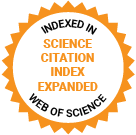Journal of Medical Internet Research
The leading peer-reviewed journal for digital medicine and health and health care in the internet age.
Editor-in-Chief:
Gunther Eysenbach, MD, MPH, FACMI, Founding Editor and Publisher; Adjunct Professor, School of Health Information Science, University of Victoria, Canada
Impact Factor 6.0 CiteScore 11.7
Recent Articles

Virtually conducted clinical trials have become an important tool for improving access to research. Online research gives rise to new avenues for potentially fraudulent actors to participate in studies to achieve monetary gain. We describe our experience of uncovering and removing fraudulent participants from a virtual research study and our methods to prevent fraudulent participants in the future. Fraudulent participation in the 2 linked online clinical trials was first uncovered in 2023, prompting our investigation and identification of additional fraudulent participants (falsified identity or information to meet eligibility criteria) who successfully enrolled in these trials. Our study team categorized indicators of suspicious activity at prescreening, screening, and baseline stages of study participation and implemented a manual checklist method to prevent fraudulent participation. We evaluate the effectiveness of our fraud prevention methods 6 months after the initial breach of the trials. Before initial detection, 10 fraudulent participants successfully enrolled in our trials. Following the implementation of new fraud prevention measures, 37 individuals were identified as fraudulent at the screening stage, and no new fraudulent participants were enrolled. We provide a comprehensive list of suspicious behaviors that may suggest the virtual research intrusion of persons using fake identities. For online clinical studies, manual methods of fraud prevention, used in conjunction with automated prevention methods, can equip researchers to detect evolving patterns of attempted fraudulent enrollment.

Patient recruitment remains a critical challenge in clinical research. Although the integration of electronically collected patient-entered data within clinical practices enables innovative recruitment approaches, existing methods present challenges such as increased patient burden and potential violation of autonomy. A more nuanced approach involves identifying patient attributes associated with higher propensity for research participation, enabling research teams to efficiently prioritize outreach efforts.

Large language models (LLMs) coupled with real-time web retrieval are reshaping how clinicians and patients locate medical evidence, and as major search providers fuse LLMs into their interfaces, this hybrid approach might become the new “gateway” to the internet. However, open-web retrieval exposes models to nonprofessional sources, risking hallucinations and factual errors that might jeopardize evidence-based care.

The majority of global maternal and newborn deaths occur in low- and middle-income countries (LMICs), often due to a lack of resources, adequate training of healthcare providers, and timely care. Low-cost digital health interventions (DHIs) could help improve Emergency Obstetric and Newborn Care (EmONC) services in resource-limited settings by incorporating innovative approaches to enhance the traditional model of care.

Electronic patient-reported outcomes (ePROs)–based cancer symptom management presents an opportunity to improve patient outcomes by optimizing symptom detection and prompting clinician interventions in tertiary hospitals. However, real-world evidence is limited, especially in primary health care (PHC) settings, which are accompanied by more complex and unknown influencing factors.



Digital health (DH) provides a valuable opportunity for accessible and efficient palliative care delivery. In recent years, an expanding body of systematic reviews and meta-analyses has examined DH-based interventions in palliative care. However, their conclusions regarding effects remain inconsistent, often constrained by methodological limitations and the variable quality of primary studies, making it difficult to form a coherent appraisal.

People who sustain a concussion and live in remote areas can experience challenges to accessing specialized assessments. In these cases, virtual approaches to assessment are of value. There is limited information on important psychometric properties of physical assessment measures used to evaluate people post-concussion virtually.

Artificial intelligence (AI) is being rolled out across the UK National Health Service (NHS) to improve efficiency; yet, its carbon footprint is largely invisible within mandatory Green Plan reporting. This work shows where NHS carbon reporting omits AI-related emissions and proposes feasible accounting and procurement measures that allow trusts to assess whether AI adoption advances or undermines net zero. A review of NHS sustainability guidance, the Department for Environment, Food & Rural Affairs conversion factors, and recent evidence on AI energy use shows that current Scopes 1-3 accounting omits substantial emissions at 3 points. First, a lack of granularity provides averages that can obscure the extreme energy intensity of certain AI workloads. Second, life-cycle emissions from specialized hardware (eg, graphics processing units) are often excluded unless trusts own the equipment, ignoring upstream manufacturing impacts. Third, widespread use of unprocured generative AI tools is unmeasured; extrapolating general practice survey data suggests that ChatGPT queries alone could release ≈ 349t CO₂e per year in primary care. To close these gaps, we propose three potential ways to help reduce these reporting gaps: (1) AI-specific carbon disclosure clauses in vendor contracts, (2) inclusion of cradle-to-grave emission factors for AI hardware in Scope 3 reporting, and (3) lightweight monitoring of external AI traffic (while recognizing potential ethical issues with this). Implementing these measures would give health care leaders a more accurate baseline against which to judge whether AI supports or undermines the NHS net-zero target.
Preprints Open for Peer-Review
Open Peer Review Period:
-
Open Peer Review Period:
-


















